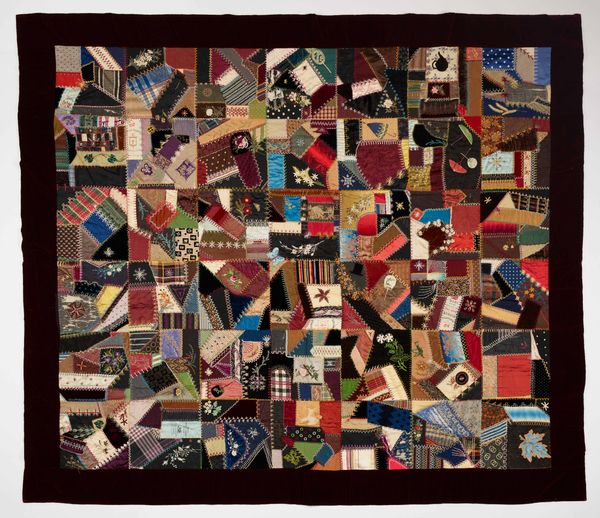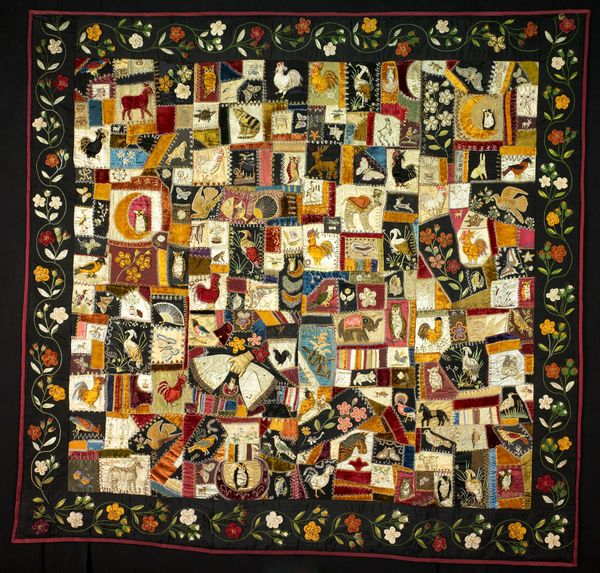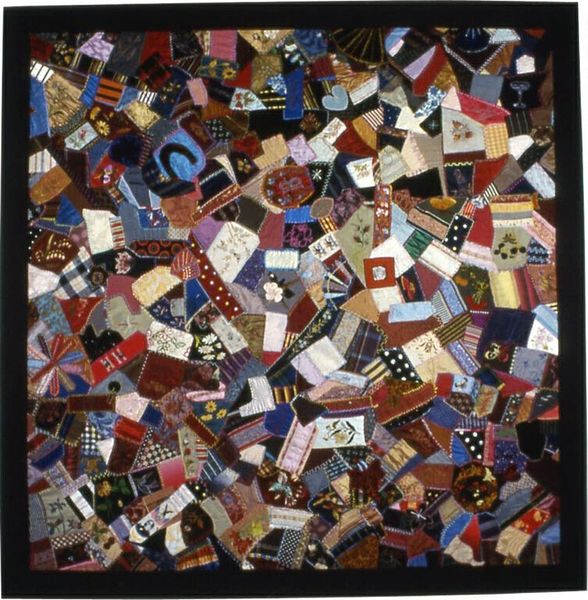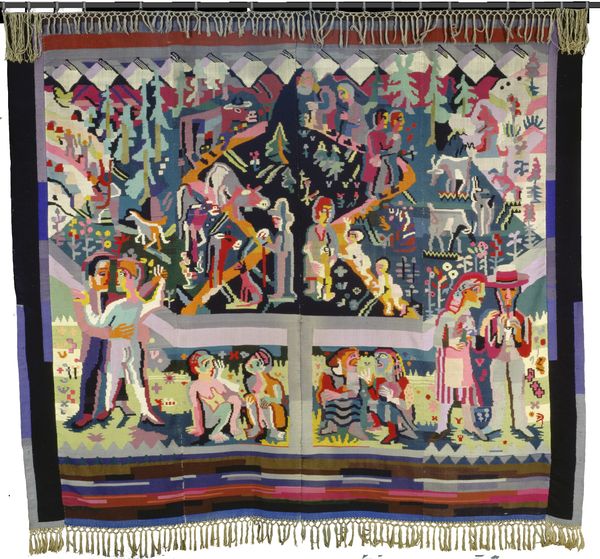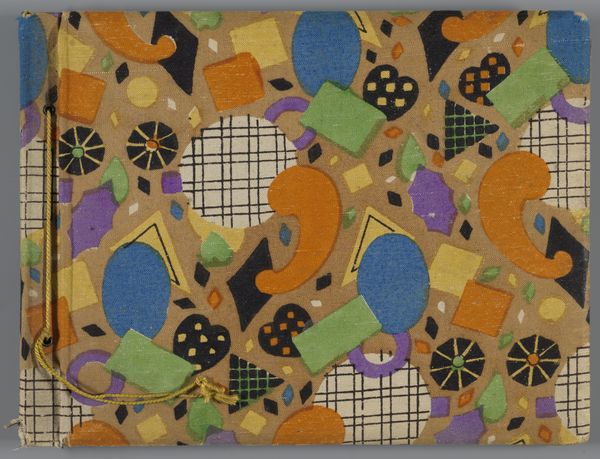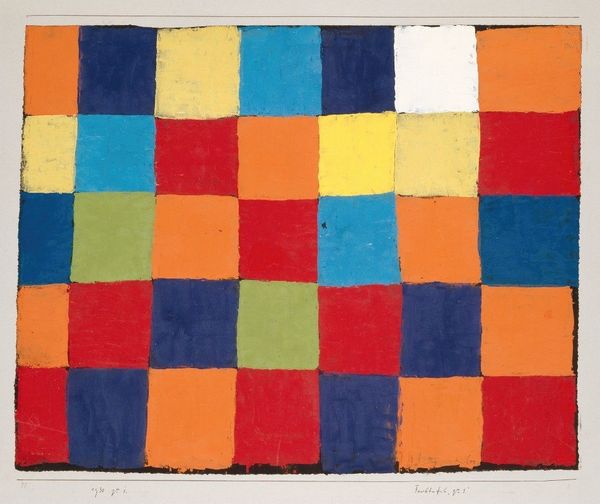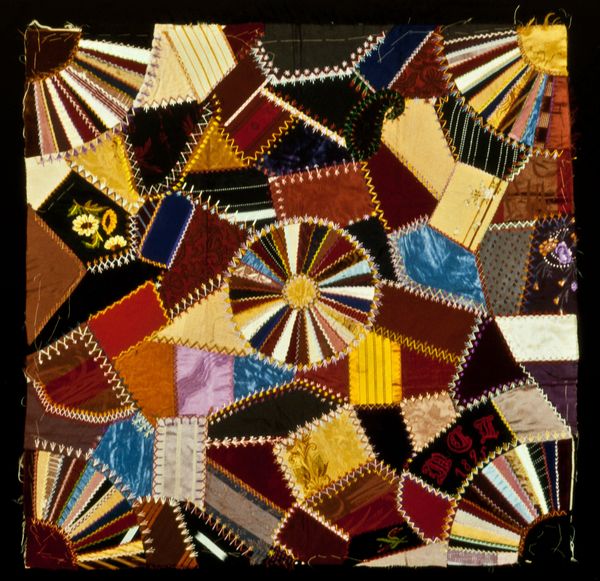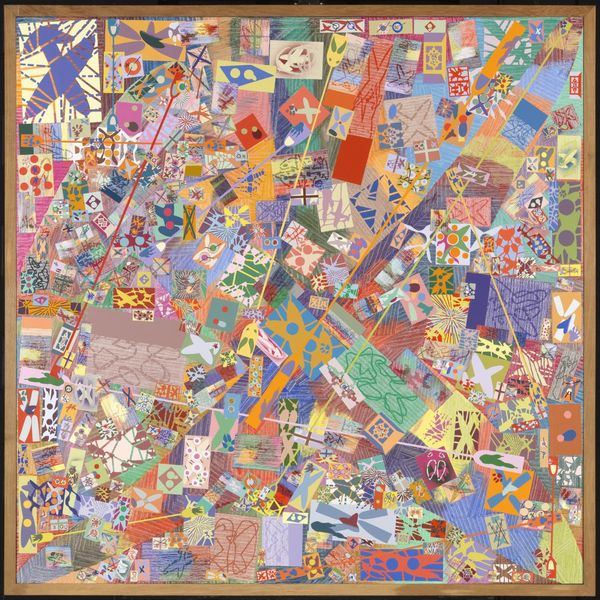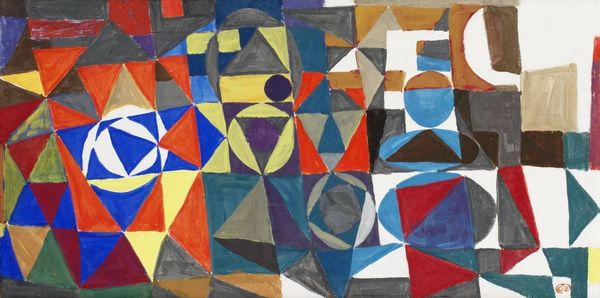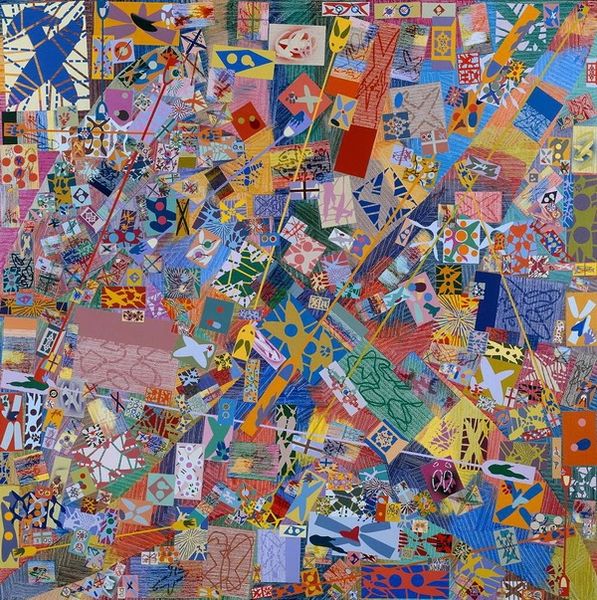
silk, textile
#
silk
#
textile
#
geometric pattern
#
folk-art
Dimensions: 82 x 65 in. (208.28 x 165.1 cm)
Copyright: Public Domain
Editor: We’re looking at Estelle Stuart's “Crazy Quilt,” made around 1904. It's this vibrant mixed-media textile, primarily silk, and the patchwork is just mesmerizing. It feels almost chaotic at first glance, yet somehow balanced. What strikes you about it? Curator: It’s interesting you use the word "chaotic." Many critics have noted how these quilts, despite appearing random, actually reflect a very specific social context. What kind of imagery do you notice appearing in the quilt? Editor: I see a lot of geometric patterns, like stars and fans, but then there are what look like little vignettes, almost like scraps of fabric with miniature pictures or words. It feels so personal. Curator: Precisely. These quilts often functioned as public displays of a woman's skill, social standing, and even her personal history. The fabrics used might have come from significant garments or events, scraps that carried memories, or demonstrated proficiency in various textile arts. Does that understanding change your interpretation? Editor: It does. So it's less about abstract design and more about storytelling? It almost sounds like a visual diary. Curator: In a way, yes. And think about the time period. The late 19th and early 20th centuries were a time of massive social and economic change, with increased industrialization. What do you imagine quilt-making represented during such a period? Editor: Maybe a connection to a pre-industrial past? A way to preserve traditions in a rapidly changing world? Or even create their own kind of social commentary? Curator: Exactly! And consider how something deemed "craft" was often excluded from the established art world. The “Crazy Quilt” can be read as a quiet rebellion, asserting value in domestic work and women's artistic expression. What do you think? Editor: I never considered the social politics inherent in something as seemingly simple as a quilt. Now it feels loaded with meaning! Thanks for showing me a new way to look at it. Curator: My pleasure! Analyzing an object’s story provides much richer context than pure aesthetics alone.
Comments
minneapolisinstituteofart about 2 years ago
⋮
Silk pieced and embroidered quilts, frequently called "crazy quilts" because of the irregular shape of the individual units, were popular at the turn of this century. This quilt particularly relates to Minneapolis because it incorporates many printed ribbons. They range from announcements of Hennepin Avenue printers Moffett and Thurston, sponsors of the Minneapolis Harvest Festival on September 23, 1893, to a memorial ribbon honoring Levi Butler of the Minneapolis Woman's Relief Corps, No. 3.
Join the conversation
Join millions of artists and users on Artera today and experience the ultimate creative platform.

